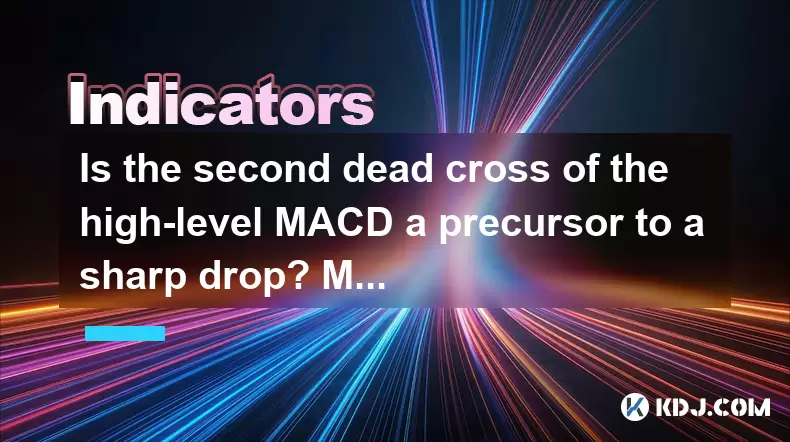-
 Bitcoin
Bitcoin $118300
-0.58% -
 Ethereum
Ethereum $3825
0.11% -
 XRP
XRP $3.137
-0.71% -
 Tether USDt
Tether USDt $0.9999
-0.01% -
 BNB
BNB $803.9
-3.37% -
 Solana
Solana $181.5
-1.94% -
 USDC
USDC $0.9999
0.01% -
 Dogecoin
Dogecoin $0.2238
-2.51% -
 TRON
TRON $0.3358
2.12% -
 Cardano
Cardano $0.7844
-2.16% -
 Hyperliquid
Hyperliquid $43.31
-1.48% -
 Sui
Sui $3.807
-4.04% -
 Stellar
Stellar $0.4203
-1.96% -
 Chainlink
Chainlink $17.79
-3.00% -
 Bitcoin Cash
Bitcoin Cash $567.8
-1.34% -
 Hedera
Hedera $0.2614
-4.30% -
 Avalanche
Avalanche $24.19
-4.46% -
 Litecoin
Litecoin $109.2
-0.74% -
 UNUS SED LEO
UNUS SED LEO $8.969
-0.01% -
 Toncoin
Toncoin $3.404
3.97% -
 Ethena USDe
Ethena USDe $1.001
-0.01% -
 Shiba Inu
Shiba Inu $0.00001307
-3.19% -
 Uniswap
Uniswap $10.33
-1.23% -
 Polkadot
Polkadot $3.884
-4.06% -
 Monero
Monero $312.9
-1.87% -
 Dai
Dai $1.000
0.01% -
 Bitget Token
Bitget Token $4.537
-2.24% -
 Pepe
Pepe $0.00001156
-3.40% -
 Cronos
Cronos $0.1437
-0.89% -
 Aave
Aave $282.8
-2.77%
Is the second dead cross of the high-level MACD a precursor to a sharp drop? Must I clear the position?
The second dead cross in high-level MACD signals strengthening bearish momentum, often prompting traders to reassess positions and manage risk.
Jun 19, 2025 at 02:49 am

Understanding the Second Dead Cross in High-Level MACD
The second dead cross in the high-level MACD (Moving Average Convergence Divergence) indicator is a technical signal that traders often monitor closely. In essence, it refers to the second instance when the MACD line crosses below the signal line after reaching elevated levels, suggesting a possible reversal or continuation of a downtrend.
This pattern typically appears during strong bearish momentum phases. When the MACD line drops below the signal line for the second time, especially after already having crossed once at high values, it can be interpreted as a confirmation of weakening bullish pressure and strengthening bearish dominance.
Important: The term "high-level" indicates that the initial MACD values were significantly above zero before the first crossover occurred.
How Does the MACD Work?
Before analyzing the implications of the second dead cross, it's crucial to understand how the MACD operates within the context of price charts:
- The MACD line is calculated by subtracting the 26-period EMA from the 12-period EMA.
- The signal line is a 9-period EMA of the MACD line itself.
- A histogram visualizes the difference between the MACD line and the signal line.
When the MACD line crosses below the signal line, it forms what’s known as a dead cross, which is generally considered a bearish signal.
In high-level scenarios:
- The MACD rises sharply, indicating strong bullish momentum.
- Then, the first crossover happens — a drop below the signal line.
- After a brief pullback or consolidation, the MACD attempts another rise but fails to surpass the previous peak.
- This results in the second dead cross, reinforcing the bearish outlook.
Is the Second Dead Cross a Reliable Indicator?
Traders must approach this pattern with caution. While the second dead cross may suggest increasing bearish control, it doesn’t always guarantee a sharp drop. Its reliability depends on several factors:
- Market conditions: In highly volatile crypto markets, false signals are common.
- Timeframe: Shorter timeframes like 1-hour or 15-minute charts may generate more frequent and less reliable crossovers.
- Volume: Confirming the second dead cross with increased trading volume enhances its credibility.
- Price structure: If the price is near a key support level, the expected sharp drop may not materialize immediately.
Important: Relying solely on the second dead cross without confirming tools like RSI, Fibonacci retracements, or candlestick patterns can lead to premature decisions.
Should You Clear Your Position Immediately?
Deciding whether to clear your position upon seeing a second dead cross involves assessing multiple elements:
- Position size and risk tolerance: If you're holding a large position and the market begins showing signs of reversal, reducing exposure might be prudent.
- Entry point: If you entered long earlier and have already secured profits, closing the entire position could be justified.
- Stop-loss placement: Traders using tight stop-loss orders may find themselves exited automatically if the price reacts sharply to the signal.
- Strategy alignment: Trend-followers may wait for stronger confirmation before exiting, while swing traders might take profits sooner.
Important: Consider partial profit-taking rather than full liquidation to manage risk while still allowing room for potential upside.
Instead of clearing the entire position, consider:
- Reducing exposure by 30–50%.
- Adjusting stop-loss closer to entry.
- Monitoring further candlestick formations for additional clues.
Steps to Analyze and Respond to a Second Dead Cross
If you observe a second dead cross forming on your chart, follow these steps methodically:
- Verify the formation: Ensure that the MACD line has indeed crossed below the signal line for the second time after reaching high levels.
- Check the timeframe: Determine whether the signal is appearing on a higher timeframe (e.g., 4-hour or daily) for better reliability.
- Review recent price action: Look for bearish candlestick patterns such as engulfing candles or dark cloud covers.
- Analyze volume: A significant increase in selling volume supports the bearish signal.
- Cross-check with other indicators: Use RSI, Stochastic, or Bollinger Bands to confirm momentum shifts.
- Assess nearby support/resistance: If the price is approaching a major support zone, the bearish signal may be temporary.
- Adjust your trade accordingly: Depending on your strategy, either reduce position size, tighten stops, or prepare for a reversal.
Important: Avoid making emotional decisions based on a single indicator. Always incorporate multi-timeframe analysis and risk management principles.
FAQs
Q: Can the second dead cross appear in uptrends?
Yes, even in uptrends, short-term corrections or consolidations can produce a second dead cross. However, if the overall trend remains intact, the signal may not indicate a full reversal.
Q: How long should I wait before acting on the second dead cross?
It's advisable to wait for the next few candles to close after the signal appears. This helps filter out false breakouts and confirms the strength of the bearish move.
Q: Is there a way to automate responses to the second dead cross?
Yes, some trading platforms allow custom alerts or automated trades based on MACD parameters. However, ensure that automation includes filters like volume or price confirmation.
Q: Does the second dead cross work better in certain cryptocurrencies?
While applicable across all assets, it tends to perform better in highly liquid and volatile coins like Bitcoin or Ethereum, where trends are more pronounced and volume spikes are clearer.
Disclaimer:info@kdj.com
The information provided is not trading advice. kdj.com does not assume any responsibility for any investments made based on the information provided in this article. Cryptocurrencies are highly volatile and it is highly recommended that you invest with caution after thorough research!
If you believe that the content used on this website infringes your copyright, please contact us immediately (info@kdj.com) and we will delete it promptly.
- Ozak AI Presale: Your Chance to Turn 1 ETH into 20? A Crypto Investment Deep Dive
- 2025-07-30 15:50:12
- IPO, Bitcoin, and Treasury: A New Era of Crypto Investment?
- 2025-07-30 14:30:12
- Bitcoin, Binance, and Whales: Decoding the Latest Market Moves
- 2025-07-30 14:50:12
- Bitcoin, Binance, and Whales: Decoding the $1.2B Shuffle
- 2025-07-30 16:10:12
- MultiBank Group's $MBG Token: Bridging TradFi and Web3 with LBank Listing
- 2025-07-30 16:10:12
- NFTs: Punks, Penguins, and the Market's Mosh Pit
- 2025-07-30 16:16:00
Related knowledge

What are the best WMA settings for day trading crypto?
Jul 30,2025 at 03:43pm
Understanding WMA in the Context of Crypto Day TradingThe Weighted Moving Average (WMA) is a technical indicator that assigns greater importance to re...

What are the advantages of using the WMA indicator for crypto?
Jul 30,2025 at 03:21pm
Understanding the WMA Indicator in Cryptocurrency TradingThe Weighted Moving Average (WMA) is a technical analysis tool widely used in cryptocurrency ...

What are the main differences between WMA, SMA, and EMA in crypto?
Jul 30,2025 at 02:50pm
Understanding the Role of Private Keys in Cryptocurrency WalletsEvery cryptocurrency wallet operates based on cryptographic principles, with the priva...

How is the WMA indicator calculated in cryptocurrency trading?
Jul 30,2025 at 02:35pm
Understanding the Weighted Moving Average (WMA) in Cryptocurrency TradingThe Weighted Moving Average (WMA) is a technical analysis tool widely used in...

What is the relationship between EMA and price momentum?
Jul 30,2025 at 04:07pm
Understanding EMA in Cryptocurrency TradingThe Exponential Moving Average (EMA) is a widely used technical indicator in the cryptocurrency trading com...

How does news and market sentiment affect EMA signals in crypto?
Jul 30,2025 at 03:00pm
Understanding EMA and Its Role in Crypto TradingThe Exponential Moving Average (EMA) is a widely used technical indicator in cryptocurrency trading th...

What are the best WMA settings for day trading crypto?
Jul 30,2025 at 03:43pm
Understanding WMA in the Context of Crypto Day TradingThe Weighted Moving Average (WMA) is a technical indicator that assigns greater importance to re...

What are the advantages of using the WMA indicator for crypto?
Jul 30,2025 at 03:21pm
Understanding the WMA Indicator in Cryptocurrency TradingThe Weighted Moving Average (WMA) is a technical analysis tool widely used in cryptocurrency ...

What are the main differences between WMA, SMA, and EMA in crypto?
Jul 30,2025 at 02:50pm
Understanding the Role of Private Keys in Cryptocurrency WalletsEvery cryptocurrency wallet operates based on cryptographic principles, with the priva...

How is the WMA indicator calculated in cryptocurrency trading?
Jul 30,2025 at 02:35pm
Understanding the Weighted Moving Average (WMA) in Cryptocurrency TradingThe Weighted Moving Average (WMA) is a technical analysis tool widely used in...

What is the relationship between EMA and price momentum?
Jul 30,2025 at 04:07pm
Understanding EMA in Cryptocurrency TradingThe Exponential Moving Average (EMA) is a widely used technical indicator in the cryptocurrency trading com...

How does news and market sentiment affect EMA signals in crypto?
Jul 30,2025 at 03:00pm
Understanding EMA and Its Role in Crypto TradingThe Exponential Moving Average (EMA) is a widely used technical indicator in cryptocurrency trading th...
See all articles

























































































